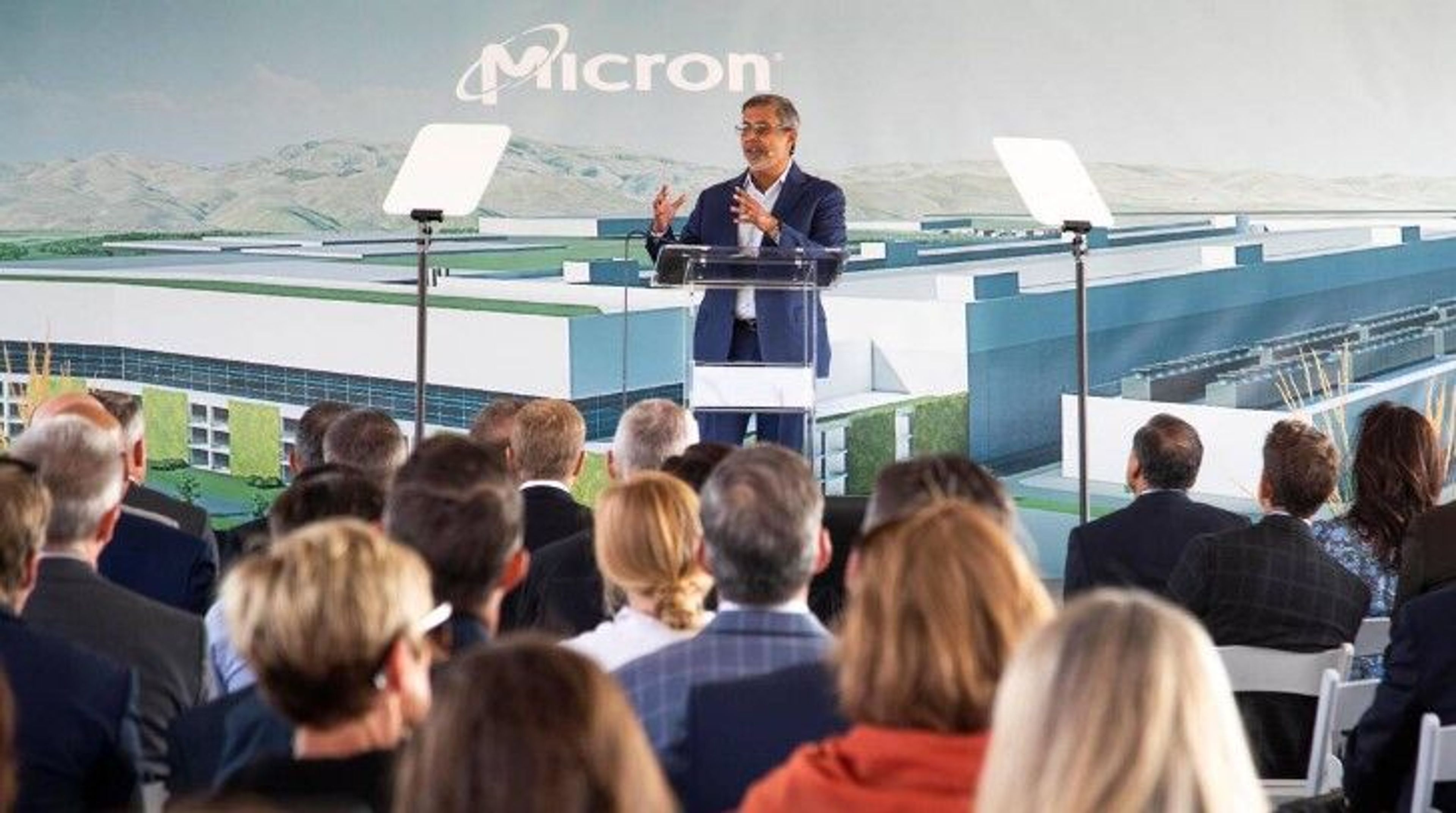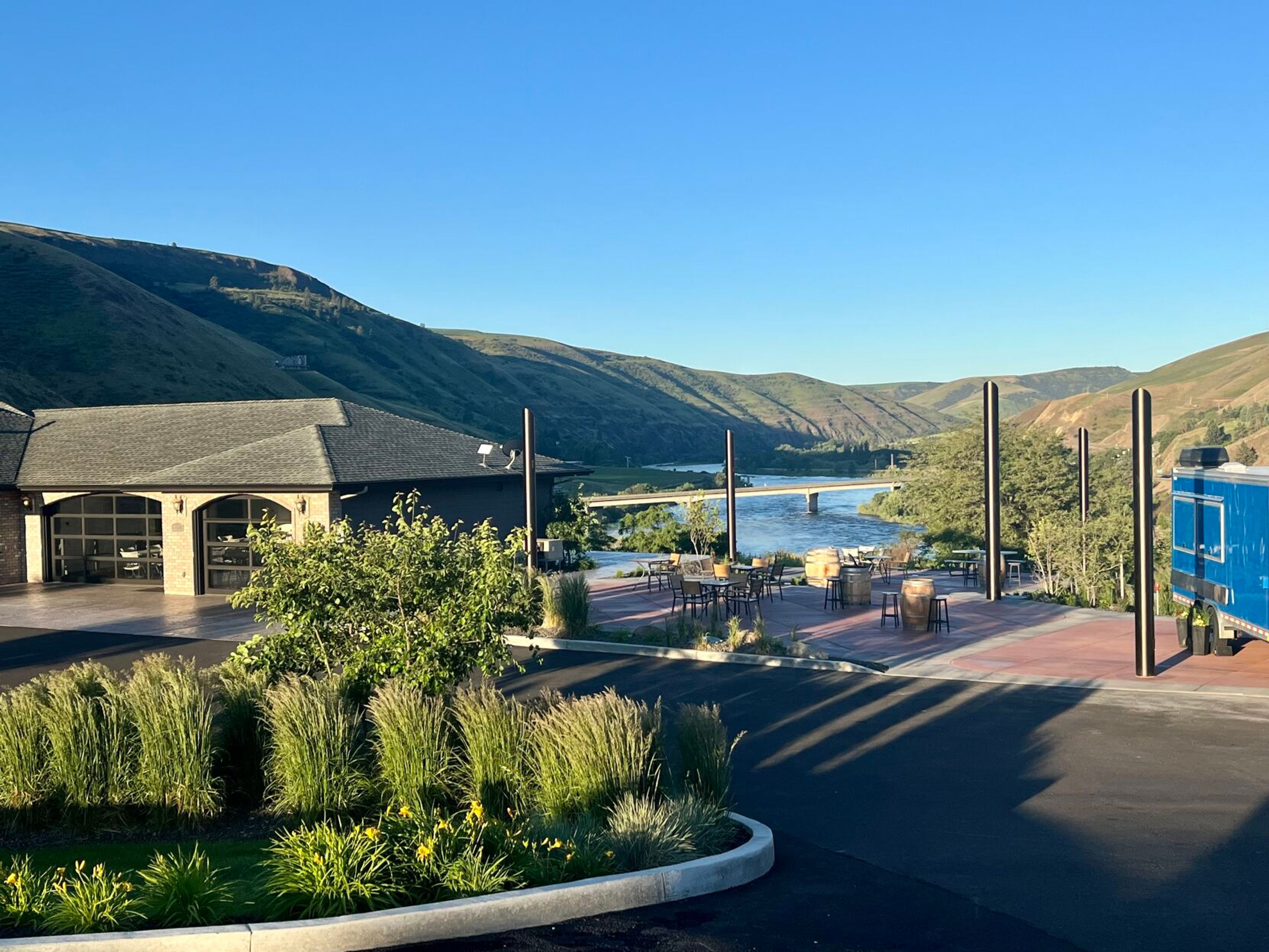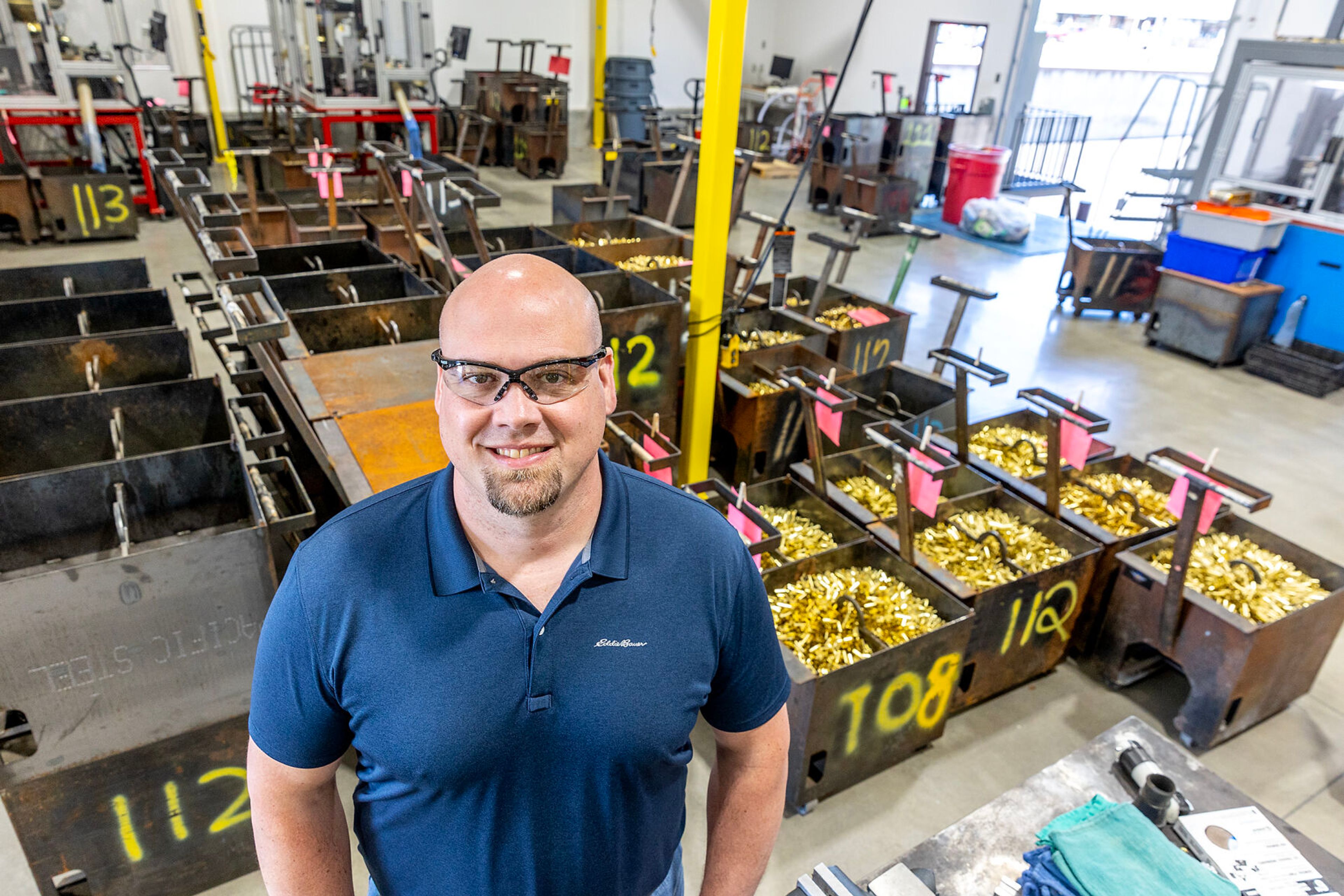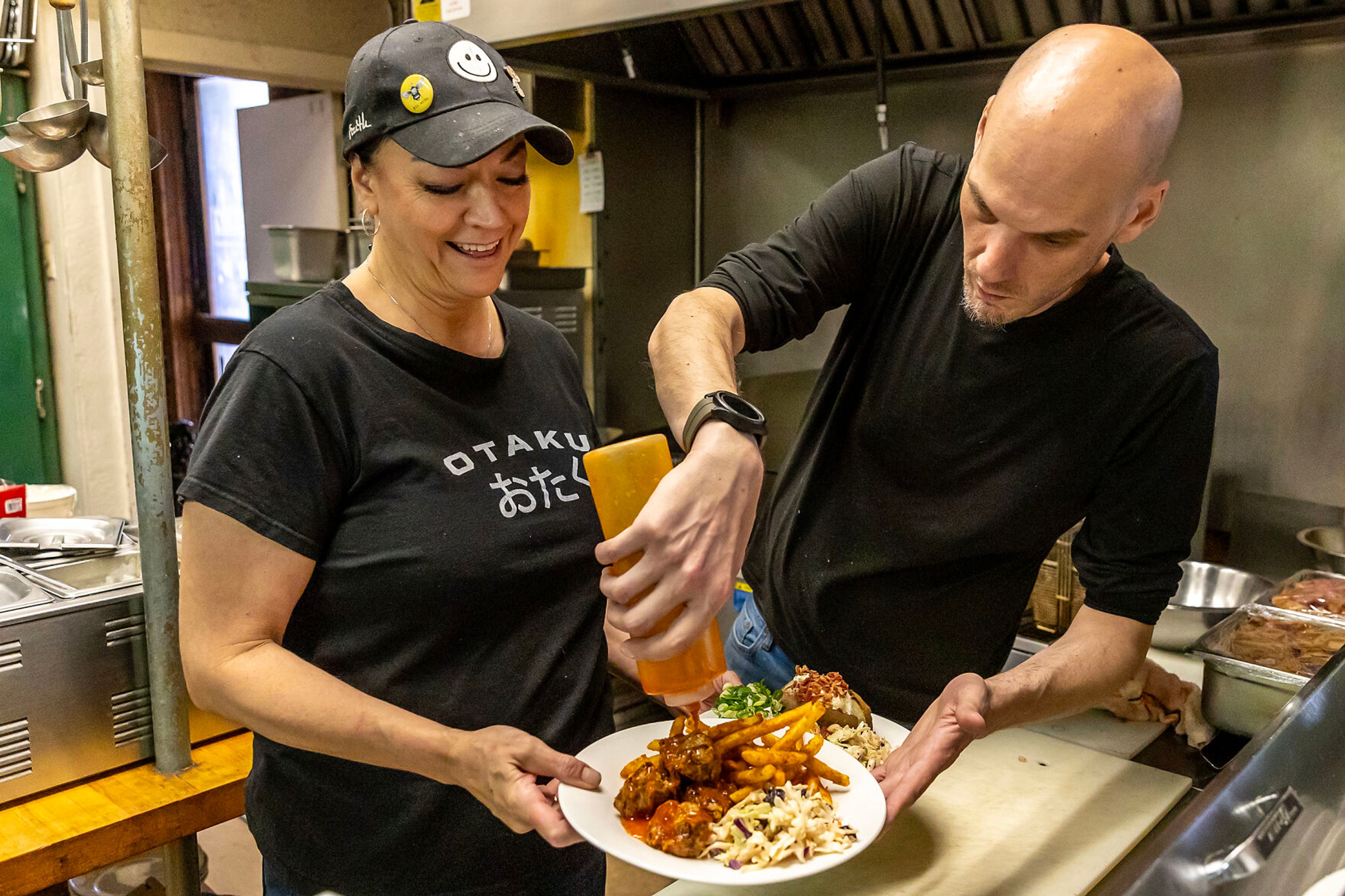BOISE — Micron Technology Inc. has big plans to expand in the Treasure Valley. Earlier this month, the company announced it would invest $15 billion to build a new plant for memory manufacturing on its Southeast Boise campus.
The plant, or fab, is projected to create about 2,000 direct jobs at Micron and 15,000 indirect jobs, including suppliers, contractors and others in the service sector, around the state.
But what will these jobs pay? Who qualifies for them? And where will the workers live? To get some answers, we asked Micron President and CEO Sanjay Mehrotra and Senior Vice President and Chief People Officer April Arnzen.
Why CEO says Boise site is ‘win-win’
Mehrotra said the company already has about 6,000 workers at its Boise headquarters and in Meridian. Micron was founded in Boise in 1978.
“We are very appreciative of the deep roots that we have in Boise,” Mehrotra said Friday by phone in a joint interview with Arnzen. “It was really a natural extension for us to build manufacturing here.”
The company used to manufacture chips for sale on its Boise campus but halted operations in 2009 and increased production at other fabs, mainly abroad. Its Boise site has evolved into the company’s principal research-and-development center, with highly educated scientists and engineers from around the world.
“This will bring manufacturing back to here in Boise,” Mehrotra said at groundbreaking ceremony Monday.
Micron now operates what the company calls a “pilot line” for R&D in Boise. Chip technology is developed in Boise, with the chips manufactured at fabs in the U.S., Japan, Taiwan and Singapore, and assembled and tested in China, Malaysia, Taiwan and Singapore, according to a spokesperson for the company.
The company’s plan to bring manufacturing back to the Treasure Valley represents a return of sorts to the past.
“It is important to have co-location of technology with manufacturing in order to accelerate time to market of advanced technologies and to do so in the most efficient manner possible,” Mehrotra said. “That’s what led us to choose Boise as the site for this $15 billion investment. This really is a win-win.”
Micron ‘mega fab’ still to come — but not in Boise
The Boise fab is not the “mega fab” Micron has talked about. That is yet to come. Mehrotra said plans are in the final stages of discussion, but he did not say where it would go.
“At the right time, we will announce that,” he said. “Boise is the first of our manufacturing sites enabled by the CHIPS and Science bill, and then we will also have a mega site. It will be for high-volume manufacturing.”
The CHIPS and Science Act approved by Congress in late July authorized about $52 billion to encourage computer chip manufacturers to build fabs inside the country. The Austin American-Statesman reported last month that Micron was considering spending at least $20 billion on a new fab about 30 miles south of Austin, Texas. The company filed applications for property tax breaks with the state comptroller’s office.
Micron has pledged to invest $150 billion in manufacturing and research and development over the next 10 years, with $40 billion of that in the U.S. The combination of memory manufacturing in Boise and at other sites will bring about 40% of Micron’s global production to the U.S. by the end of the decade.
Construction of Boise’s new fab will begin in early 2023, Mehrotra said. He expects to have the clean room, where silicon wafers are turned into integrated circuits, come online sometime in 2025. It will be the largest clean room ever built in the country. The plant will occupy 600,000 square feet, or the size of about 10 football fields, according to Mehrotra.
“Of course, production will be ramping up over time — over the course of the second half of this decade,” he said.
Highly paid and skilled engineering, technical jobs
Want a job at Micron, perhaps at the new Boise fab? Arnzen said the company’s jobs are highly skilled at all levels. Technicians and engineers must know how to monitor Micron’s multimillion-dollar equipment and make sure everything runs smoothly.
The estimated 2,000 jobs created by the new fab will also be high paying, she said. Pay will vary based on certain roles, but an early career technician at Micron can expect to earn about $55,000 per yea,r and an experienced technician about $80,000 in base pay and annual performance bonuses, a spokesperson told the Statesman by email.
An entry-level or early career engineer can earn about $90,000 and an experienced engineer about $150,000. The overall average base yearly pay is projected to be more than $100,000 a year, the spokesperson said.
Micron plans “to start substantial hiring” in the second half of 2023.
“For some roles, even stock awards are included,” Arnzen said in the interview. “It’s a very comprehensive compensation package.”
The company has a food service program, fitness gyms and a health and wellness center on-site. Micron also plans to build a child care center to support its growing population of employees.
“As we get closer and start posting these jobs, we’ll be able to share more information,” Arnzen said.
‘We have got to expand the workforce’
Micron, the state’s largest for-profit employer, hopes to create a pipeline from Idaho colleges and universities to the company’s apprenticeships and internships. The goal? To fill those 2,000 jobs.
The company previously announced investments in K-12 STEM education programs focused on reaching underrepresented and rural students.
“We will be working with universities and community colleges to fill our jobs,” Arnzen said. “We have got to expand the workforce and expand that pipeline.”
Micron also shared that it would partner with the College of Western Idaho to deliver curriculum such as Advanced Mechatronics Engineering Technology. Mechatronics is a field within mechanical engineering.
On its website, CWI said the curriculum will involve working with smart technologies like “robots, automated guided systems and computer-integrated manufacturing equipment.”
“CWI is thrilled to work side-by-side with Micron in supporting the launch of this expansion and is ready to provide education and training to fuel the workforce for these jobs,” the college said.
‘A lot of work’ to supply housing for new employees
It’s no secret that the Boise area has an affordable housing crisis. Home prices are just starting to inch down and single-family homes are still out of reach for many who want them. Micron plans to partner with the public and private sectors to ensure its workers can find housing when the time comes.
“Housing is a challenge that we need to solve,” Arnzen said. “There is a lot of work going on to ensure we can bring the housing online when it is needed to support these employees.”
Other large employers in the Boise area, like St. Luke’s, have struggled to recruit new workers because of the housing shortage. Not to mention, Micron’s expansion may put the city back on the map for other tech businesses, according to previous reporting by the Statesman.
Arnzen said the incredibly tight housing market in Boise has affected her own family over the last few years.
“We are looking at variety of solutions,” she said. “And again, partnering with both the local government, the city, the county, as well as the other employers.”
GROUNDBREAKING CEREMONY FOR FAB
The Statesman’s interview with Mehrotra and Arnzen was their only interview with Boise-area news outlets in advance of Micron’s groundbreaking ceremony Monday to mark the start of the plant’s construction. Micron said the fab will be the first of its kind to be built in the U.S. in 20 years. Participants included Boise Mayor Lauren McLean, Idaho Gov. Brad Little, U.S. Sen. Jim Risch, U.S. Secretary of Energy Jennifer Granholm, and Dr. Alondra Nelson, acting director of the White House Office of Science and Technology Policy.









